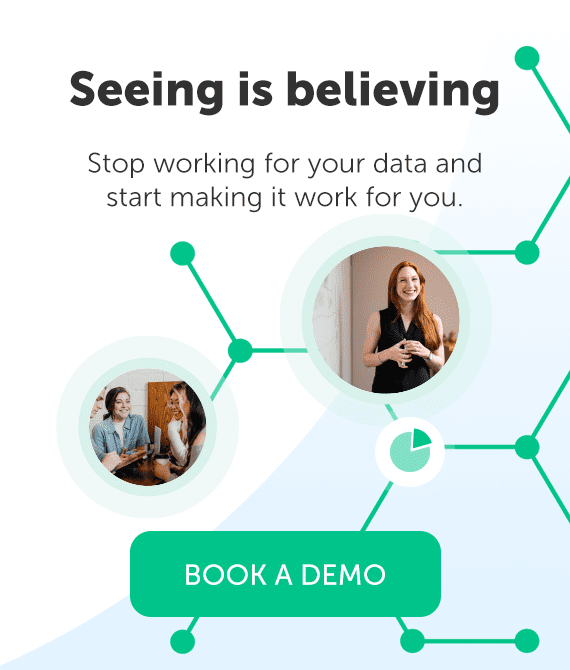Ask any firm leader about their CRM and you’ll likely hear the same thing: “It’s useful, but no one actually uses it.” The irony is that the technology meant to make relationship management easier has become a source of friction. The usual advice around CRM best practices like more training and stronger mandates only adds to the fatigue. The old playbook has run its course. The real shift happening now is structural, not cultural. The most successful firms are rewriting their CRM data strategy around automation and intelligence, not compliance, to finally make their systems work for the people using them.
The old playbook: why traditional CRM “best practices” fall short
Most conventional CRM best practices focus on managing behavior. The advice is usually the same, which is to convince or compel people to enter more data, more often. And the assumption is that if you add enough training, mandates, or incentives, adoption will eventually take care of itself.
The problem is that none of these approaches fix the underlying issue. Training, compliance rules, and rewards don’t address the need for CRM data automation and process redesign to improve effectiveness and long-term ROI. They still rely on the idea that busy professionals will willingly spend extra time acting as data-entry clerks. In reality, they won’t, and that’s why so many CRMs stall out.
Two patterns come up again and again in firms trying to make their CRM stick.
The training trap: you can’t train people to embrace a tool that creates more work
Every firm has tried this: you bring in a CRM consultant, book a half-day workshop, and walk out confident that “this time will be different.” For a week or two, people log in more often. But soon, the dashboards look the same as before: half-completed contact records, missing meeting notes, and referrals passed over coffee or email that never make their way into the database.
It’s not because your team didn’t understand the training. It’s because training doesn’t change the fact that entering data into the CRM slows them down. The only way to truly improve CRM adoption is to reduce that friction at the process level.
A business development manager who just got out of a two-hour client meeting isn’t going to spend another 20 minutes copying details into the system. They’ll type up a quick email to the client, maybe drop a note to their practice lead, and move on. The CRM gets skipped because it’s the lowest-value task on their plate.
The irony is that a CRM for professional services, which should support client relationship management, often ends up competing with billable work instead of enabling it.
The mandate mistake: forcing usage produces low-quality data and erodes morale
Another common approach is to make CRM usage mandatory through firm-wide policies or performance expectations. On paper, this sounds like accountability. In practice, it often leads to rushed, low-quality entries that undermine your CRM data strategy.
A consultant preparing for Monday deadlines might spend a few minutes on Friday afternoon back-filling “required” activity logs with vague notes about a networking lunch or sparse client call summaries – just enough to meet the compliance box. The CRM looks active, but the data is thin and inconsistent.
Even worse, this kind of enforcement changes the perception of the CRM. Instead of being a tool that helps your professionals strengthen relationships and stay ahead of opportunities, it becomes a management box-checking exercise. Instead of building trust, the CRM ends up eroding it and the very system meant to unify your data becomes the one everyone second-guesses.
The new playbook: a modern framework for CRM success
For years, the default answer to poor CRM adoption has been more training or stricter rules. The reality is different: the system should be doing the heavy lifting, not the professionals who rely on it. In professional services, where revenue depends on relationships, a CRM that’s augmented with automation to reduce friction, improve data quality, and surface insights automatically gives firms the foundation they actually need. That’s what makes these CRM best practices matter: they turn the CRM into a tool professionals genuinely value, instead of another box to check.
Best practice #1: make automation the foundation
The first priority is eliminating manual entry. No professional or partner is going to block off time to type notes into a CRM and they shouldn’t have to.
The dilemma isn’t your people, it’s the design. CRMs were built as systems of record, not systems of automation. Without augmentation, they will always depend on extra effort that professionals don’t have to give.
Tools like Introhive connect to your CRM and capture client-facing activity from emails, and calendar interactions in the background without requiring anyone to lift a finger. It’s a “zero-touch” approach that removes the biggest adoption barrier and ensures the system reflects reality instead of relying on memory.
Best practice #2: prioritize data quality and enrichment
Automatic capture is a start, but value comes when the records in your CRM are complete, consistent, and trusted. That means every interaction ties to the right contacts and companies, and those records carry the context your team needs to act.
This is where enrichment and data quality matter. Platforms that enhance your CRM, like Introhive, identify real contacts from everyday communications, filter out noise, and keep details current. You get clean contact creation from email and calendar activity, smart de-duplication, standardized titles and company names, and firmographic enrichment such as industry and company size. Stale or partial records get updated, so your marketing and BD lists are always usable without a clean-up sprint.
A simple example: you add external attendees to a calendar invite. Instead of a blank or fragmented entry in the CRM, the contacts are created or updated with verified details, the interaction is associated with the right account, and the record is ready for follow-up before your debrief. That’s how enrichment supports a dependable CRM data strategy and makes your CRM for professional services more than a repository of names.
When the data is accurate and complete, everyone’s trust in the system rises, and you can improve CRM adoption because people see reliable context when they open it.
Best practice #3: focus on adoption through value, not mandates
Training and mandates can push people into the system, but they don’t keep them there. Lasting adoption happens when data is captured and enriched automatically. When your system shows a partner the full context of a client relationship: the last meeting that took place, the colleagues who recently engaged the account, the updated contact details enriched behind the scenes, it stops being a compliance box and starts serving as a source of intelligence they actually want to use.
This is what sustainable adoption looks like in practice. Your professionals aren’t logging in to satisfy a rule; they’re logging in because it helps them prepare for meetings, avoid duplicate outreach, and identify the right paths to decision-makers. In other words, the CRM stops being a chore and starts becoming part of how professionals work, which is the mark of a CRM data strategy that actually supports the business.
Best practice #4: turn your CRM into an intelligence engine
When firm growth depends on trust and introductions, a static contact record isn’t enough. The real opportunity comes from relationship intelligence that shows the strength and context of the connections your firm already has.
When activity is captured automatically and records are enriched with accurate firmographic data, you can start answering the questions that matter most in business development:
- Who at your firm already knows this prospect?
- How strong is that relationship?
- What introductions could open the door to the decision-makers?
- Where do alumni, board memberships, or client overlaps create a natural path in?
Platforms like Introhive specialize in uncovering these insights by mapping relationships across the firm. Instead of relying on guesswork or individual memory, you can maintain a clear view of where warm introductions exist and how to leverage them – a key advantage of building a CRM data strategy around relationship intelligence rather than manual entry. For example, high growth law firms are growing more than five times faster than their peers, and a big part of that advantage comes from how they systematize business development by turning relationship intelligence into a repeatable process.
For professional services firms, that distinction matters. The CRM is still the system of record, but when it’s augmented with relationship data it becomes far more useful. Instead of static contact lists, you get visibility into who knows whom, how strong those connections are, and where warm introductions exist. That clarity helps you and your colleagues concentrate on the relationships that are most likely to open doors and create new opportunities for the firm.
Best practice #5: integrate insights directly into user workflows
To be useful, relationship insights need to appear in the tools your professionals already rely on every day.
That’s why the most effective setups surface context in Outlook, Exchange, Google Workspace, or collaboration tools like Microsoft Teams. Before a meeting, you might see which colleagues have recently spoken with the client, so you don’t both show up in the lobby wondering why the other is there. Or a partner reviews a pre-meeting brief on their phone in the Uber ride over to a client for easily digestible and timely updates that help them walk in informed and positioned as a strategic advisor.
This approach removes one of the biggest hurdles to adoption and is one of the most effective ways to improve CRM adoption without adding extra work for your team. Instead of asking people to go into the system, the system meets them where they are. And instead of remaining a static database, your CRM, augmented with automation and relationship intelligence, becomes a practical guide for strengthening client relationships in real time.
If your CRM still struggles with low adoption and incomplete data, the answer isn’t more training sessions or stricter mandates. Those approaches only put pressure on people without fixing the underlying design flaw. The real opportunity comes from addressing the process itself.
A modern CRM strategy for professional services starts with automation. By removing manual data entry, enriching records, and surfacing insights where your professionals already work, you create a foundation that improves adoption naturally. With accurate, complete, and timely information, your CRM transforms from a system of record into a system of intelligence that supports business development, strengthens client relationships, and delivers measurable ROI.
It’s no small thing that 61% of leaders have automated their CRM software, a clear sign that market leaders are betting on systems, not manual effort.
In the end, CRM best practices aren’t about pushing people harder. They’re about giving professionals tools that make their work easier and more valuable to the firm.
Introhive enables this modern approach by automating activity capture, improving data quality, enriching contacts, and mapping firm-wide relationships. The platform integrates seamlessly with systems you already use, and delivers insights directly into the workflows where your professionals spend their time.
Ready to see how you can stop fighting adoption and start realizing value from your CRM? Book a demo with Introhive today.





